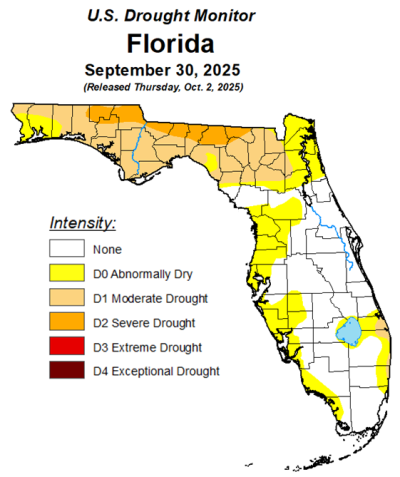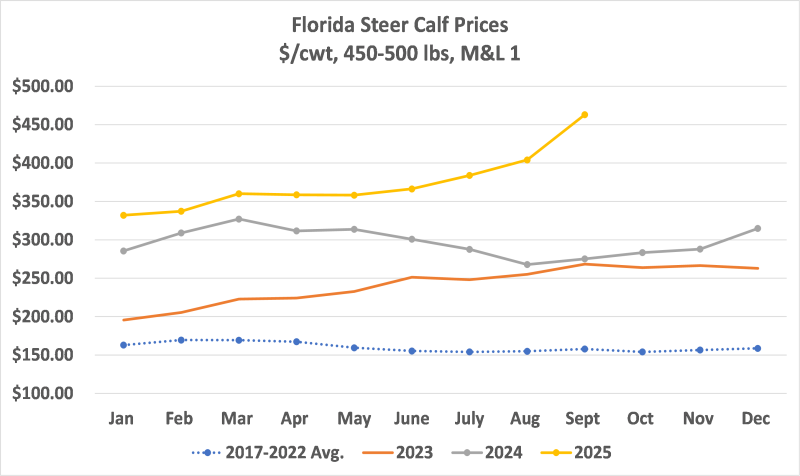Lower Temperatures & Higher Calf Prices
 Fall is officially here! At the time of writing this in late September, temperatures were starting to cool off in the mornings and evenings as we head into the fall months. This means that warm season perennials will begin heading into their dormant stages, if they have not already due to drought. Thoughts about providing winter supplementation, grazing cool-season forages, and feeding hay are and should be on the forefront of producers’ minds in an effort to maintain body condition of their cows. In the current market, an open cow means missing the opportunity of selling a high-priced calf.
Fall is officially here! At the time of writing this in late September, temperatures were starting to cool off in the mornings and evenings as we head into the fall months. This means that warm season perennials will begin heading into their dormant stages, if they have not already due to drought. Thoughts about providing winter supplementation, grazing cool-season forages, and feeding hay are and should be on the forefront of producers’ minds in an effort to maintain body condition of their cows. In the current market, an open cow means missing the opportunity of selling a high-priced calf.
While most of the state has experienced plentiful rainfall, all of the North Florida is experiencing some level of drought conditions, with some areas along the northern border experiencing severe drought conditions. This is no doubt forcing producers to start feeding hay earlier and maybe even cull cows and sell calves earlier than normal. While now is a great time to sell cattle with cull cows bringing around $1.50/lb and calves bringing well over $4.00/lb, I believe the industry would like to start rebuilding at some point. But drought in the Southeast is certainly not helping or encouraging expansion efforts.
High calf prices are not yet encouraging expansion. In fact, they are incentivizing producers to sell heifers rather than retaining and even to wean/sell calves early. At this time of year, we typically see a dip in prices, as the majority of spring-born calves are being sold. Across the country, calves have been sold earlier this year due to everyone anticipating that seasonal decline and trying to get ahead of it. In Florida, historical price data shows that we usually start experiencing that seasonal decline in July when weaning starts, lasting until November or December.
–
However, that has not been the case in 2025. Prices for calves have steadily increased since July, rather than decreasing. Florida prices in September for 450-500-pound steer calves were 68% higher year-over-year. It is safe to say that this fall-run is unlike many we have experienced before. This is not to say that there will not be a seasonal decline starting in October or later in the year. We are in uncharted waters with this market. With that said, if there is a decline, it may not be as large as we have seen before. Demand is still very strong across the board, which is now the key driver of these prices. Feedlots still need calves, and low corn prices with high fed cattle prices are helping to reduce cost of gain. Packers still need carcasses, and high boxed beef prices are helping to mitigate some loss. Most importantly, consumer demand has remained strong even with high beef prices, which is driving higher cattle prices across all sectors.
–
Questions, contact Hannah at h.baker@ufl.edu
See this update and other helpful resources online at https://rcrec-ona.ifas.ufl.edu/about/directory/staff/hannah-baker/
- October 2025 Florida Cattle Market Update - November 7, 2025
- Florida Calves in the Feedlot: What Extension Agents Learned in West Texas - October 10, 2025
- September 2025 Florida Cattle Market Update - October 3, 2025


